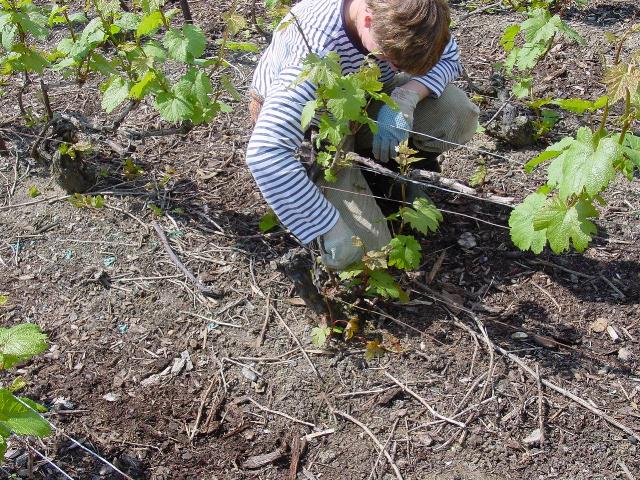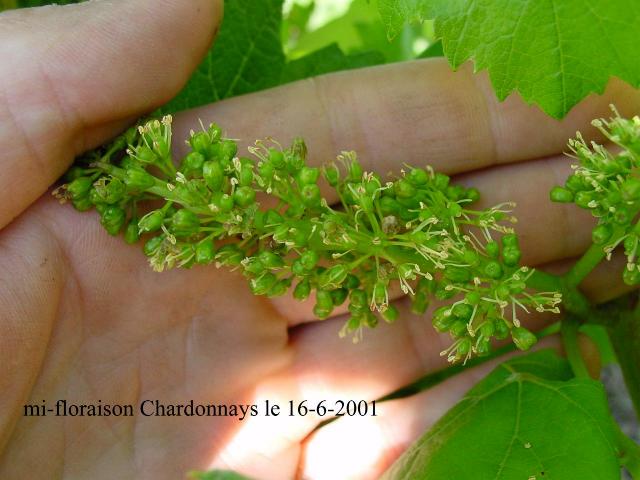Discover our company’s exceptional spring vineyard management process, resulting in a distinctive and exquisite organic Champagne, crafted from only the finest grapes.
Bud removal
In the spring, carefully selected buds left by the winter pruner start to sprout and produce shoots called canes. However, the vine also produces unwanted shoots, which, if left unchecked, can hinder its growth by drawing too much sap. To prevent this, a skilled worker removes these shoots in a process known as “bud removal.” When this process is performed on more developed shoots, it is called “sucker removal.”

Training the growth of vines
To obtain the neat rows of vines that we are familiar with, it is necessary to guide their growth. For this purpose, we stretch wires between the vine stakes to support the vegetation. As the branches grow, we gradually raise the wires until they reach the top of the stakes.

Topping
Topping involves trimming the tops of the branches once they have become too long. This allows the sap to flow down to the grapes-to-be.
At this time of year, small grape clusters become quite visible as they enter the flowering phase and begin to require significant amounts of energy from the plant. To ensure this important phase progresses smoothly, the vine requires plenty of sunshine, warmth, and moderate rainfall. During this time, the vineyard fills with the sweet scent of flowers and pollen. A successful flowering phase will result in good grapes.
In contrast, if weather conditions are poor or the vines are affected by a disease, the flowering may lead to poor fruit set or poor berry development (absence of grapes or small berries in the clusters).
The vine expends a great deal of energy during this stage, making it very susceptible to disease.
Trellising
Shortly after topping, this stage consists of untangling the shoots trapped in the wires and directing them along the axis of the vine, straightening out the bent shoots, and separating the shoots of each plant with the help of a clip (a small accessory that pinches the wires), and tying up the shoots that have escaped the wires.
Trellising prepares the vine for pruning, but above all, it aerates the vine. In fact, a poorly aerated vine, with shoots and clusters that intertwine, can produce a suffocating effect, and cause the grapes to rot at the dawn of the harvest.
Mowing and Plowing
In springtime, it is also necessary to mow the grass and plow the grass-covered plots. On bare plots, we will have to weed. In our vineyard, we have chosen to alternate between grass-covered and bare routes.


